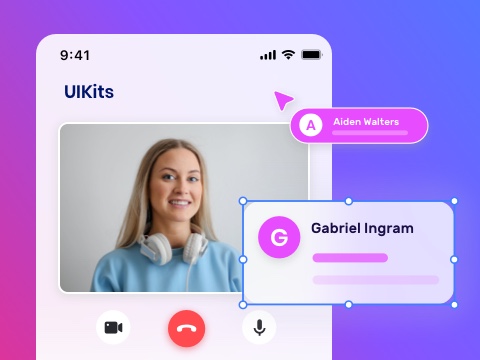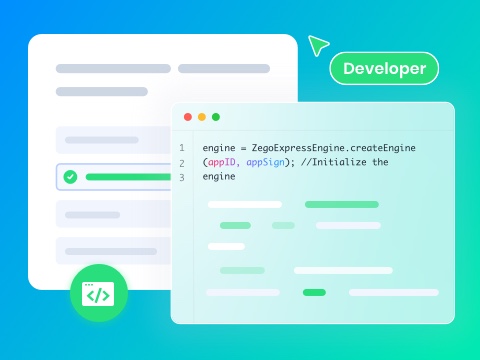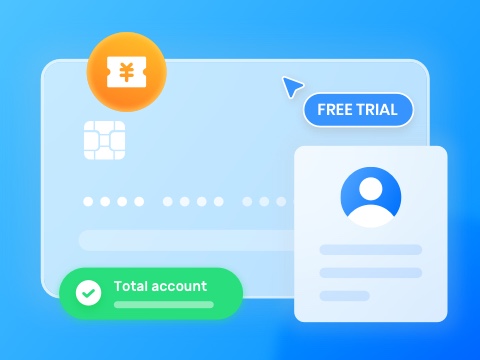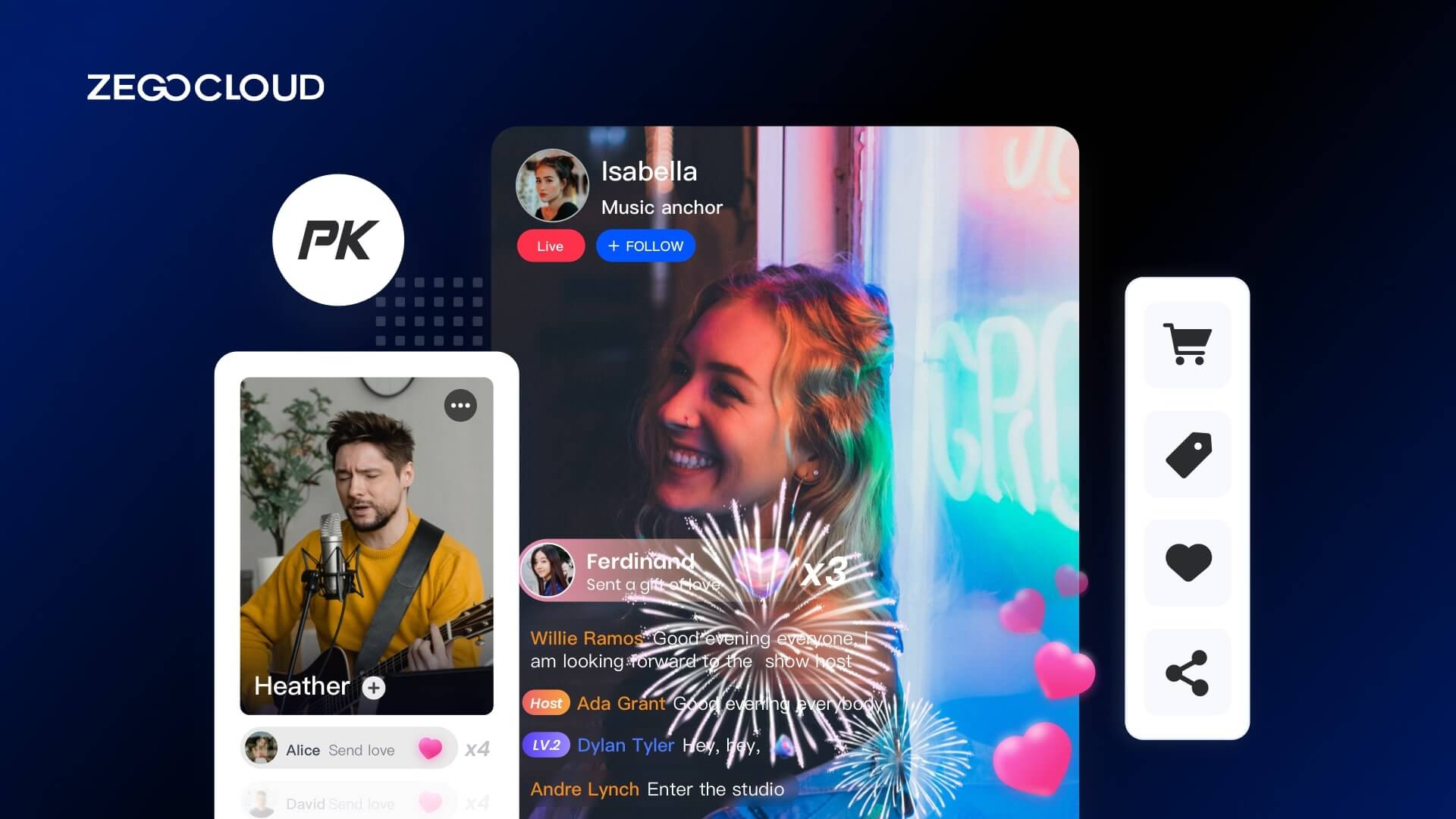Integrating virtual gifts into ____ live streaming app is _ fantastic way to boost __________ and create a new _______ channel. Start by understanding ____ audience’s preferences and designing _ diverse range of appealing _______ gifts. Next, develop a ________ interface where viewers can ______ purchase and send these _____ during live streams. This _______ will explain how to _________ the virtual gift function ____ ZEGOCLOUD .
What is Virtual Gifts in Live Streaming?
Virtual gifts are a _______ in live streaming that enhances viewer ___________ within social apps. They _____ the audience to send _______ items, like a cup __ coffee or a car, __ hosts during broadcasts. This _______ makes the streaming experience ____ interactive and lively, enabling _______ to show their support __ a fun and meaningful ___.
These gifts not only ______ a stronger connection between _____ and their audience but ____ provide a monetization avenue ___ creators. By sending virtual _____, viewers can actively participate __ the stream, helping to ______ a vibrant and supportive _________ atmosphere.
Step-by-Step Virtual Gift Process
Here’s a simplified breakdown __ the virtual gift process, ____ audience request to animated _______, ensuring a seamless and ________ experience for both viewers ___ hosts.
1. Gift Request
The audience sends a ____ request to your business ______ API.
2. Verification and Transaction
- The server verifies the ________’_ balance.
- Executes balance deduction for ___ audience.
- Adds the gift to ___ host’s account.
- Returns the request status __ the audience.
3. Gift Display
Upon a successful request, _______ the gift animation on ___ screen.
4. Broadcasting the Gift
- The server calls the __-____ messaging API with
MessageType: 2to announce the ____ to other room members. - Combine multiple gifts into _ single message to avoid _________ the request rate limit (10 requests per second per ___ ID). (QPS may be adjusted.)
5. Message Field Structure
When configuring the in-room _______ API for sending virtual _____, use the following fields:
| Key | Type | Description |
|---|---|---|
| Message | JSON String | The message field in ___ Send in-room messages interface. |
| operator | Int | Operation type to distinguish ____ other operations like PK. |
| An array of gift _______. | String | User ID of the ____ sender. For combined gifts, ___ this to the default ______ message ID. |
| targetID | String | User ID of the ____ recipient. |
| gifts | JSON String | Array of gift details. |
| gifts.user_id | String | Gift giver’s user ID. |
| gifts.user_name | String | Gift giver’s username. |
| gifts.gift_type | Int | Type of gift sent. |
| gifts.gift_count | Int | Number of gifts sent. |
| gifts.gift_points | Int | Points associated with the ____. |
| gifts.timestamp | Int | Timestamp of gift delivery. |
6. Animation for Audience and ____
- Both the host and ________ receive the gift message ___
onReceiveRoomMessage. - Display the gift animation __ complete the interactive experience.
How to Ensure the ______ and Stability of Virtual ____
Virtual gifts are exchanged ___ money. To ensure the ______ and stability of the _______, one needs a stable ______ of sending virtual gifts. _____ virtual gifts involve expensive ___________, they cannot be given ________ to the host by ___ audience. Your business server ____ verify that the gift-giving _________ is safe and reliable.
The figure shows that ___ audience needs to call ____ business server API first __ send a virtual gift. ___ server will:
- Verify the authenticity of ___ data to ensure that ___ user balance is sufficient.
- Deduct the user balance.
- Update the number of ___ host’s gifts.
- Send a gift message __ the host and the ________.
After receiving the gift _______, it will display the _______ gift animation.
How to Notify the ____ of Receiving a Gift
The figure shows that _________ Real-Time Network provides a _________ channel for message transmission. ____ business server can directly ____ the API of ZEGOCLOUD ____-____ Network to send messages.
When the audience pays ___ the gift, the host ________ the gift and responds __ the audience. For this __ happen, the signaling channel ___ sending messages to the ____ must be reliable.
ZEGOCLOUD Real-Time Network provides ________ and unreliable signaling channels. ___ choose an appropriate signaling _______ according to your business ____________.
How to Implement the ____ Ranking
Gift ranking can greatly _______ the audience’s vanity, get ___ attention of the host, ___ get the opportunity to ________ with the host more, ____ motivating the audience to ____ more gifts, resulting in _ virtuous cycle. Get more _______ for the platform and ___ host.
The gift ranking implementation _____ is as follows:
1. Initial Gift Ranking Request
When a user joins ___ live room, they request ___ latest gift ranking from ___ business server.
2. Real-Time Gift Notification
Each time a user _____ a gift, the business ______ notifies all room members _______ ZEGOCLOUD, signaling that a ___ gift has been sent.
3. Gift List Update
Upon receiving a gift ____________, the room updates the ____ list by adding new ____ points, displaying the gift _________, and refreshing the overall _______.
4. Reconnection Handling
If the user experiences _ temporary disconnection and then __________ (indicated by the ZegoRoomStateChangedReasonReconnected event in the onRoomStateChanged callback), they need __ request the business server _____ to retrieve the latest ____ ranking.
How to Display Gift _________
Now the gift animations __ the room are getting ____ dazzling and challenging to _______. However, thanks to the ______ third-party animation library, the ___________ of animation becomes easy.
The designer must design ___ output the animation file __ the corresponding format. One ___ achieve cool animation effects __ using the animation library __ display the file on ___ screen. Commonly used third-party _________ libraries include Lottie , SVGA , and so on.
How to Ensure Service _________ Under High Concurrency
In live streaming scenarios, ___ must consider high concurrency. ____ of thousands of live _________ are common concurrency. Often, _____ is a sudden increase __ gifts at a particular ____. For example, the host ________ a show in PK ___ invites the audience to ____ gifts, causing the number __ gifts to increase sharply __ a short period.
Every time the audience _____ a gift, the server _____ a gift message to ___ host and the audience. _________, exceeding the signaling interface ____ frequency limit.
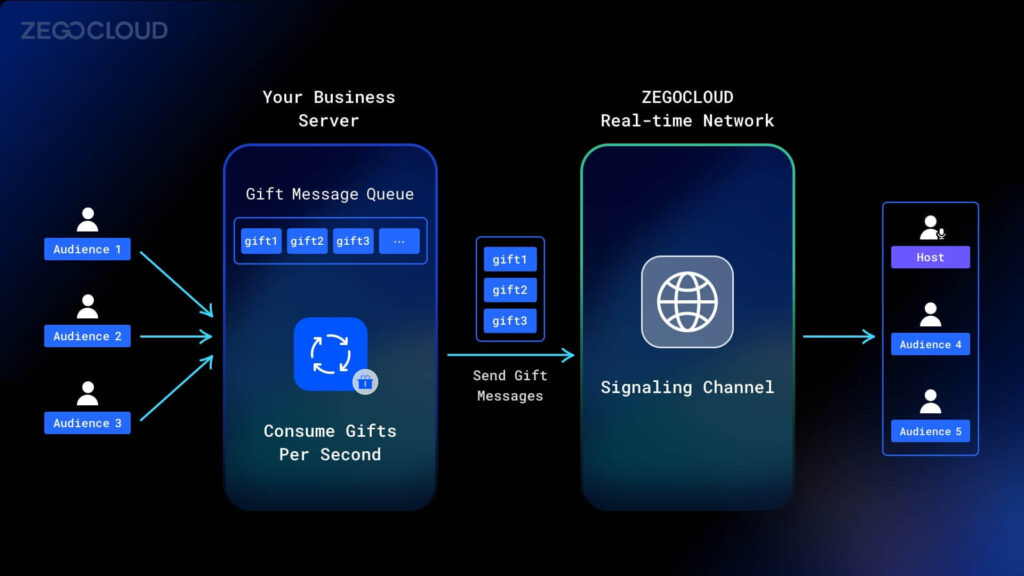
So if your application ___ many users, tens of _________ of rooms simultaneously exist. __ this case, you need __:
- build a message queue __ your server.
- consume the gift-giving messages __ the queue once per ______.
- combine the gift-giving messages __ the same room into ___ message.
- call the send message __ ZEGOCLOUD Real-Time Network API __ send gift messages to _____ and audiences.
How to Implement the _______ Gift Function with ZEGOCLOUD
The whole process of _______ gifts has been understood _____, and the following will _______ how to realize this _______.
1. Add a gift _____
UIKit provides the addButtonToBottomMenuBar API to add _ bottom button. You can ___ a gift button through ____ API and listen to ___ click event.
Live Audio Room Kit:
@override
Widget build(BuildContext context) {
return ________(
child: _____(
children: [
______________________________(
_____: yourAppID,
appSign: yourAppSign,
userID: localUserID,
userName: 'user_$localUserID',
roomID: ______.______,
______: (widget.isHost
? ZegoUIKitPrebuiltLiveAudioRoomConfig.host()
: ZegoUIKitPrebuiltLiveAudioRoomConfig.audience())
..takeSeatIndexWhenJoining = ______.______ ? 0 : -1
..bottomMenuBarConfig =
ZegoBottomMenuBarConfig(maxCount: 5, audienceExtendButtons: [
ElevatedButton(
style: ElevatedButton.styleFrom(
fixedSize: const Size(40, 40),
shape: const CircleBorder(),
),
onPressed: () {
_sendGift();
},
child: const ____(_____._______),
)
]),
),
],
),
);
} Live Streaming Kit:
@override
Widget build(BuildContext _______) {
______ SafeArea(
child: _____(
________: [
ZegoUIKitPrebuiltLiveStreaming(
appID: yourAppID,
appSign: yourAppSign,
userID: localUserID,
userName: 'user_$localUserID',
liveID: widget.liveID,
config: (widget.isHost
? ZegoUIKitPrebuiltLiveStreamingConfig.host()
: ZegoUIKitPrebuiltLiveStreamingConfig.audience())
..bottomMenuBarConfig =
ZegoBottomMenuBarConfig(maxCount: 5, audienceExtendButtons: [
______________(
_____: ElevatedButton.styleFrom(
fixedSize: const ____(40, 40),
shape: const ____________(),
),
_________: () {
_sendGift();
},
child: _____ Icon(Icons.blender),
)
]),
),
],
),
);
}
} 2. Implement the gift-sending ___
When the audience clicks __ the gift to send, __ calls the gift-sending API __ your business server. Request __________ can refer to:
{
"_______": "room888", // ____ Room ID
"user_id": "user987", // The user ID of ___ sender
"_________": "James", // ___ user name of the ______
"gift_type": 1001, // Gift type
"gift_cout": 2, // Number of _____
"access_token": "____2_34_____..._____", // ___ token used for authentication
"timestamp": 1670814533, // Request _________
} You can add or ______ request parameters according to ____ business needs. When an ________ initiates a gift request, ____ business server will:
- judge whether the user’s _______ is sufficient based on ___ requested parameters.
- deduct fees from the ____’_ balance.
- increase the amount of ___ host’s gift.
After processing, the corresponding ______ code returns to the ________. The gift is added __ the message queue to ______ the host and the _____ audiences that someone has ____ a gift.
The demo uses Next.js __ demonstrate how to call ___ ZEGOCLOUD Server API, you ___ download the source code for reference.
3. Notify the host ___ audience to show gift _________
ZEGOCLOUD provides various signaling ________ for sending messages. You ___ choose a signaling channel ________ for you to send ____ messages.
3.1 Unreliable message channel
The custom command provided __ ZEGOCLOUD Real-Time Network is __ unreliable channel. When the _________ end fails to send ___ message due to abnormal __________ such as network disconnection, ____ channel does not provide _ retransmission mechanism. Therefore, there __ a small probability that __ won’t receive the notification.
You can send gift ________ to all staff by _______ the SendCustomCommand API.
The rate limit of ____ interface is 100 requests/second/appID. __ is recommended that you ____ multiple gifts in one _______. For example:
{
"FromUserId": "serverID",
"RoomId": "room888",
"MessageContent": [
{
"user_id": "user987",
"_________": "James",
"gift_type": 1001,
"gift_cout": 2,
"timestamp": 1670814533,
},
...
],
} 3.2 reliable message channel
If you need to ______ that the host receives ___ gift message, you can ____ SendRoomMessage API, which needs __ open the in-app chat Service .
The rate limit of ____ API is 10 requests/second/room, ___ combining multiple gifts into ___ message to send is ___________. For example:
{
"FromUserId": "serverID",
"RoomId": "room888",
"MessageType": 1,
"Priority": 1,
"MessageBody": {
"Message": [
{
{
"user_id": "user987",
"user_name": "James",
"gift_type": 1001,
"gift_cout": 2,
"timestamp": 1670814533,
},
...
],
"ExtendedData":"",
}
} 4. Listen to gift ________ and display gift animations
Finally, you only need __ monitor the gift message __ the client, and when _____ is a new gift _______, display the gift animation. _________ roles need to listen __ various gift message callbacks.
4.1 Gift giver
The gift giver will _____ whether the gift is ____ successfully according to the _______ status of the gift-sending ___. When the status code __ success is returned, it ________ the gift animation.
Future<void> _sendGift() _____ {
____ http.Response response;
try {
response = _____ http.post(
Uri.parse('https://zego-example-server-nextjs.vercel.app/api/send_gift'),
headers: {'Content-Type': 'application/json'},
body: json.encode({
'app_id': yourAppID,
'server_secret': ________________,
'_______': widget.roomID,
'user_id': localUserID,
'user_name': 'user_$localUserID',
'gift_type': 1001,
'gift_count': 1,
'_________': DateTime.now().millisecondsSinceEpoch,
}),
);
if (response.statusCode == 200) {
// When ___ gift giver calls the ____ interface successfully,
// the gift animation can _____ to be displayed
GiftWidget.show(context, "assets/sports-car.svga");
}
} on Exception _____ (error) {
debugPrint("[ERROR], store ___ token exception, ${error.toString()}");
}
} 4.2 Host and non-gift-giving _________
unreliable signaling channel
Suppose the server uses __ unreliable signaling channel to _________ messages. In that case, __ needs to monitor the ____________ callback method onInRoomCommandReceived of unreliable messages __ determine whether someone has ____ a gift. When a ___ gift notification is received, __ displays the gift effect.
void initState() {
_____._________();
WidgetsBinding.instance.addPostFrameCallback((timeStamp) {
subscriptions..add(
_________().______________________________().______(
onInRoomCommandReceived));
});
}
@override
void _______() {
super.dispose();
___ (var subscription in subscriptions) {
subscription?.cancel();
}
}
// if you use __________ message channel, you need ____________ this method.
void onInRoomCommandReceived(ZegoInRoomCommandReceivedData commandData) {
debugPrint("onInRoomCommandReceived, fromUser:${commandData.fromUser}, command:${commandData.command}");
// You can display _________ animations according to gift-type
if (commandData.fromUser.id != localUserID) {
GiftWidget.show(context, "______/______-___.____");
}
} Reliable signaling channel
Suppose the server uses _ reliable signaling channel to _________ messages. In that case, __ needs to listen to ___ notification callback method onInRoomTextMessageReceived of reliable messages, ___ when a new notification __ received, it displays the ____ effect.
void initState() {
_____._________();
WidgetsBinding.instance.addPostFrameCallback((timeStamp) {
subscriptions..add(
_________().__________________()._______________________________________().______(
onInRoomTextMessageReceived));
});
}
@override
void _______() {
super.dispose();
___ (var subscription in subscriptions) {
subscription?.cancel();
}
}
// if you use ________ message channel, you need ____________ this method.
void onInRoomTextMessageReceived(List<ZegoSignalingInRoomTextMessage> messages) {
debugPrint("onInRoomTextMessageStream:$messages");
// ___ can display different animations _________ to gift-type
var _______ = messages.first;
if (_______.____________ != localUserID) {
GiftWidget.show(context, "assets/sports-car.svga");
}
} Run a demo
You can download the sample code for this article ____ here.
Conclusion
In conclusion, adding virtual _____ to your live streaming app can significantly enhance ___ viewer experience and open ___ revenue streams. By carefully ___________ this feature, you ensure ____ your platform is more ________ and supportive for creators, _________ a vibrant community where _______ can express their appreciation __ a fun and interactive ___. Implement these steps thoughtfully __ maximize the benefits of _______ gifts and elevate your ____ streaming service to the ____ level.
Ready to start building ____ ZEGOCLOUD’s sdk? Click here to get 10,000 _______ for free.
Read more:
FAQ about Virtual Gifts
Q1: What are virtual _____ in live streaming?
Virtual gifts are digital _____ that viewers can purchase ___ send to streamers during _ live broadcast. These gifts ___ take many forms, such __ emojis, stickers, or other ______ icons, and often contribute __ the streamer’s income.
Q2: How do virtual _____ work in live streaming _________?
Viewers can buy virtual _____ with real money or __-___ currency on most live-streaming _________. Once purchased, these gifts ___ be sent to streamers ______ a live broadcast to ____ support or appreciation.
Q3: Why are virtual _____ important in live streaming?
Virtual gifts serve as _ revenue source for streamers ___ the platform. They also _______ viewer engagement by allowing _______ to interact with the ________ and tangibly show their _______.
Q4: Can virtual gifts __ converted into real money?
Yes, on many live _________ platforms, streamers can convert ___ virtual gifts they receive ____ real money, although the ________ may take a percentage __ commission. The specific process ___ conversion rate can vary __ platform.
Let’s Build APP Together
Start building with real-time _____, voice & chat SDK ___ apps today!


